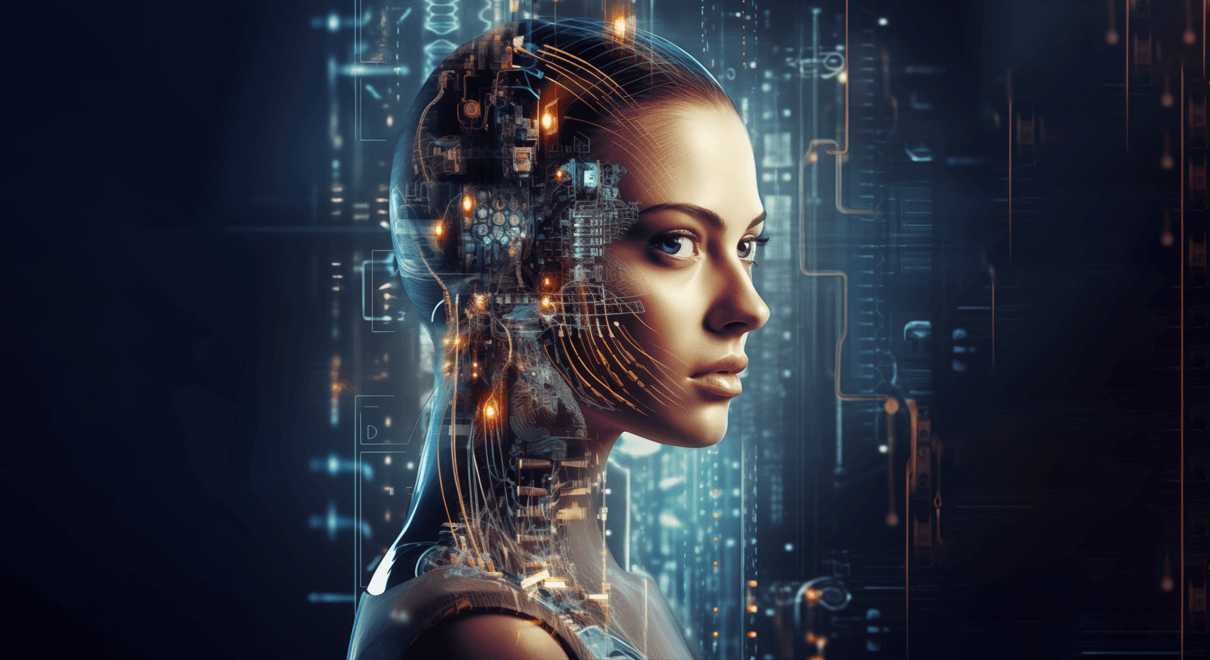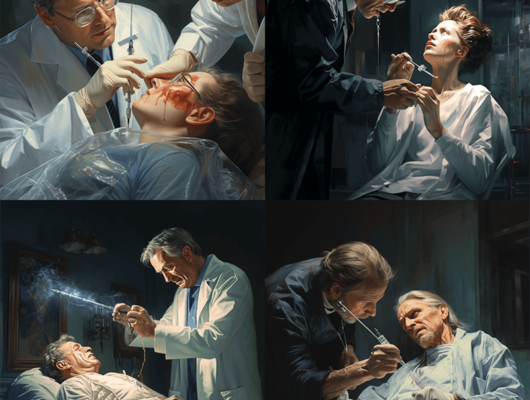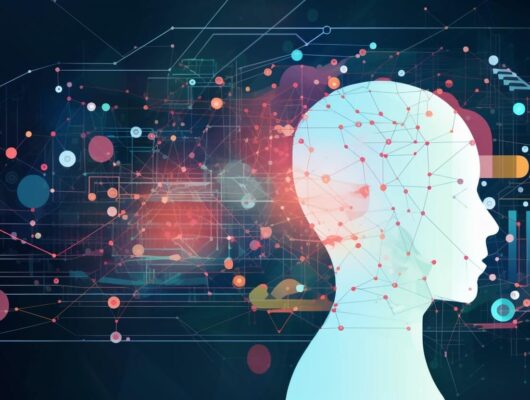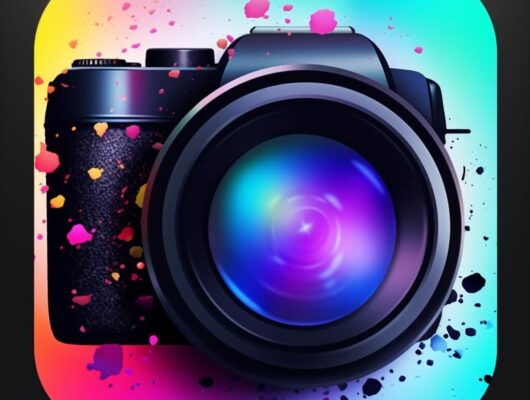This blog was written by Erick Gabrielyan, 4th year SDSU student as part of his internship program.
As artificial intelligence capabilities grow, we see many examples of how it can be used in various fields. Two such examples are DALL-E and Mid-journey. At Sciencia, we can use AI to develop protocols for the use of these models in marketing.
What is DALL-E?
DALL-E represents an innovation from OpenAI, an AI model that takes the concept of Generative Adversarial Networks to an advanced stage. Launched on January 5th, 2021, it took twitter by storm. Its remarkable ability lies in generating high-quality images based on textual descriptions. This feat is achieved through extensive training on a vast dataset of images, enabling DALL-E to craft entirely original visuals in response to a wide array of prompts and textual cues. Its prowess relies on unsupervised and reinforcement learning techniques, enabling it to comprehend input and translate it into visually captivating imagery.
What is Midjourney?
Entering the scene on july 12, 2022, Midjourney, another remarkable AI-powered system, centers its focus on elevating and transforming visual content. This system leverages cutting-edge image processing algorithms to perform alterations and stylizations on images. Its capabilities encompass a spectrum of modifications, including color adjustments, application of artistic filters, addition of special effects, and the creation of distinct visual experiences. Midjourney distinguishes itself with its user-friendly interface, facilitating effortless image manipulation and offering users the opportunity to tap into their creative potential with ease.
What is Firefly?
Adobe’s Firefly is a new web application that is poised to transform creative workflows by harnessing the power of generative AI as of March 2023. At its core, Firefly introduces the “Generative Match” feature, which is currently in beta. It empowers users to combine text prompts with reference images, resulting in imagery that seamlessly blends the style of both elements. Generative Match becomes an invaluable asset for maintaining a cohesive look across campaign content, even when multiple individuals are involved in content creation. Another of the standout benefits it has is the ability to express your unique artistic style. Firefly allows you to guide the AI to generate images that resonate with your individual creative perspective. While these generated images provide a solid starting point, you can further enhance and personalize them using integrated tools like Adobe Photoshop.
Adobe is committed to responsible AI use, emphasizing safeguards against misuse and encouraging transparency. Firefly’s generative models are responsibly trained on licensed content and public domain materials, with content moderation in place to filter assets before they become part of the training dataset. Additionally, Adobe offers enterprise customers the option to obtain IP indemnification for content generated using Firefly. Content Credentials, a digital information label Adobe is pioneering, allows creators to attach vital information about their work, including their name, date of creation, and tools used, enhancing transparency and trust in digital content.
Adobe also advocates for the FAIR Act, a legislative effort designed to protect creators from AI-driven impersonation for commercial gain without consent. In terms of safeguarding Generative Match, Adobe has implemented user confirmation for the right to use reference images, the ability to label images to prevent their use as style references, and the storage of reference images to ensure compliance with terms of service.
DALL-E vs Midjourney vs Firefly
| AI Image Generator Comparison | DALL-E | Midjourney | Firefly |
| Transforms textual descriptions into visuals | ✔ | ✔ | ✔ |
| Generates photorealistic images from text | ✔ | ✖ | ✖ |
| Interactive user interface | ✖ | ✔ | ✔ |
| Allows real-time adjustments to images | ✖ | ✔ | ✔ |
| Prioritizes user-friendliness | ✖ | ✔ | ✔ |
| Offers a wide range of artistic filters | ✖ | ✔ | ✔ |
| Encourages creative image manipulation | ✖ | ✔ | ✔ |
| Quality depends on input visuals | ✖ | ✔ | ✔ |
| Generates images with realistic textures | ✔ | ✖ | ✔ |
| Used in an industrial capacity | ✖ | ✖ | ✖ |
The determination of superiority among DALL-E, Midjourney, and Firefly hinges on specific needs and preferences. Each model possesses unique strengths and characteristics. DALL-E is most well-known in the area of creative image generation rooted in textual prompts. Its exceptional prowess transforms textual descriptions into intricate and imaginative visuals, surpassing the boundaries of the ordinary. These images tend to look photorealistic, even incorporating a sense of imperfection that lends realism. DALL-E’s engagement relies on the textual prompt, where users can try different prompts to generate corresponding images.
In contrast, Midjourney prioritizes interactivity and user friendliness. It offers a highly interactive interface that empowers users to make real-time adjustments to various attributes of generated images. This level of customization encourages users to explore their creative ideas and refine their images until the desired outcome is achieved. Midjourney’s image quality depends more heavily on the input visuals and applied modifications to the original prompt. It generates a wide range of artistic filters and effects to enhance and stylize images creatively, while DALL-E generates high-quality images with detail and sticks to the input descriptions where images often prioritize realistic textures and shapes.
Firefly, though a new contender, strikes a middle ground between the two where it is very artistically dynamic and aims to create realistic textures comparable to DALL-E. It rivals Midjourney in terms of creativity however, it doesn’t generate textures that are nearly as realistic as DALL-E, although this could be for the better as it prioritizes actual content. What really sets Firefly apart is that it preemptively attempts to combat a lot of the legal and ethical criticisms that AI image generators get in terms of ownership of the art that is used to train them, as well as the art that they create.
What is Photoshop?
Adobe Photoshop is a powerful and renowned raster graphics editing software released by Adobe on February 19, 1990. It has been an industry standard for decades and is widely used by professional photographers, graphic designers, and digital artists. Photoshop provides a vast array of tools and features for image manipulation and enhancement. It allows users to work with layers, apply filters, adjust color balance, retouch photos, and create intricate digital artwork. With its extensive capabilities, Photoshop is primarily intended for professional use and is available as a paid subscription service through Adobe Creative Cloud.
What is PicsArt?
PicsArt, on the other hand, is a mobile photo editing and creative app designed for both casual users and aspiring artists. Primarily designed to be used on smartphones, it was launched as an android app in 2011, then in 2013 for IOS. It offers a user-friendly interface and a wide range of tools and features to edit photos, create collages, produce digital artwork, and develop AI images directly on mobile devices. PicsArt is available on both iOS and Android platforms and offers a free version with in-app purchases, as well as a paid subscription option for added functionality.
Photoshop vs Picsart
| Photo Editing Tools Comparison | Photoshop | PicsArt |
| Available on desktop platforms | ✔ | ✖ |
| Available on mobile platforms | ✔ | ✔ |
| Easy for beginners | ✖ | ✔ |
| User-friendly interface | ✖ | ✔ |
| Requires extensive training | ✖ | ✖ |
| Integrated with social media | ✖ | ✔ |
| Professional-grade graphic design | ✔ | ✖ |
| Supports compositing | ✔ | ✔ |
| Precision editing capabilities | ✔ | ✔ |
| Used in an industrial capacity | ✔ | ✖ |
| Integrated with a high-power AI | ✔ (Firefly) | ✖ |
One of the primary distinctions between Photoshop and PicsArt is their accessibility and platform compatibility. Photoshop is primarily a desktop application available on both Windows and macOS, while PicsArt is a mobile app designed for smartphones and tablets. This means that Photoshop offers a more comprehensive and robust set of features but requires a computer, whereas PicsArt provides convenient on-the-go editing capabilities.
Photoshop is renowned for its depth and complexity. It offers a steeper learning curve, making it suitable for professionals who require intricate editing and design capabilities. In contrast, PicsArt is known for its user-friendly interface, making it more accessible to beginners and casual users. It doesn’t require extensive training or technical expertise to achieve satisfying results. Photoshop excels in advanced image manipulation, high-resolution editing, and professional-grade graphic design. It offers unparalleled precision, making it the preferred choice for tasks like retouching, compositing, and print design. PicsArt, while capable of producing impressive results, is better suited for quick edits, social media sharing, and creative experimentation.
Adobe Photoshop’s strengths lie in its extensive toolset, professional-grade editing capabilities, and support for high-resolution projects. It’s ideal for photographers, graphic designers, and artists who demand precise control and exceptional quality in their work. Additionally, its integration with other Adobe software like Illustrator and InDesign makes it a seamless part of a professional workflow. PicsArt shines in its accessibility, ease of use, and portability. It allows users to edit and create content on-the-go, making it perfect for social media enthusiasts and those who want to enhance their mobile photography. The app also fosters a creative community, providing access to a vast library of user-generated content, tutorials, and inspiration.
Legal Policy for use of AI image tools
On August 18th, 2023, a U.S. federal judge declared that AI artwork doesn’t qualify for federal copyright protection, citing that copyright law pertains to the “original intellectual conceptions of the author.” Given that AI art lacks a human author, it isn’t subject to copyright. This viewpoint is echoed in many countries, rendering AI-created artworks non-copyrightable.
ChatGPT clarifies in its terms of use that content produced using its AI is exempt from copyright, encompassing both personal and commercial uses. This stance is mirrored in other AI art generators’ terms and conditions. Although AI-generated pieces can’t be copyrighted or linked to an individual, the materials used to train the algorithms might have copyrights held by human artists. This can lead to potential copyright violations when producing AI-derived art. Such potential violations have been increasingly called attention to. In 2023, Getty Images initiated a lawsuit against Stability AI, an AI generator suspected of employing unlicensed Getty Images photos for AI image generation. Although the AI-generated images lacked copyright, the source photos were under copyright licenses that were not observed. Determining the training sources of AI generators can be challenging. Hence, caution is advised when considering the commercial use of AI-produced images due to potential copyright infringements. As discussed above, AI generators like Adobe’s Firefly are designed to work within the existing and evolving legal framework, as it’s trained on Adobe Stock images rather than public art. This approach is seen as aligning better with copyright protection.If there are concerns regarding a generator’s sources, individuals can report the generator. Recognizing an artist’s work within AI-generated art warrants notifying the artist, enabling them to act if needed.
All of this is consistent with an executive order issued by the White House on October 30th, 2023. President Biden’s Executive Order emphasizes leading in AI innovation while managing its risks. It also focuses on protecting workers and consumers, bolstering innovation, and ensuring responsible government AI use. All the while, the future of copyright in the age of AI art remains uncertain. Countries like the U.S., Germany, and Spain have stringent copyright regulations, but as AI artwork becomes more mainstream, its non-copyrightable nature seems likely to persist. Artists can consider measures like obtaining a Creative Commons license for their works as a means to guard against potential infringements by AI generators. While not foolproof, such steps might aid in establishing cases of copyright violations.
Going Forward…
In the evolving realm of artificial intelligence, the use of AI-generated images has become increasingly prevalent, with models like DALL-E, Midjourney, and Firefly at the forefront. DALL-E, developed by OpenAI, excels in transforming textual descriptions into intricate and imaginative visuals with a touch of photorealism. On the other hand, Midjourney offers an interactive platform for image manipulation, emphasizing user-friendliness and creative exploration. Firefly integrates itself with other Adobe tools like Photoshop, while working to give artists ownership of the work they create. The choice between these systems depends on individual needs and preferences: DALL-E catering to those seeking realistic visuals based on text, Midjourney empowering users to customize and enhance images creatively, and Firefly for those looking for a more ethically-conscientious approach.
For professionals in the life sciences industry looking to enhance the realism of AI-generated images from Midjourney, a protocol using Adobe Photoshop can be invaluable. The process involves opening the AI-generated image in Photoshop, creating a duplicate layer to preserve the original, adjusting image size if necessary, and correcting color issues. Additionally, sharpening techniques can be applied to enhance details, and noise reduction may be employed if the image exhibits excessive noise or artifacts. Blending modes can be used to seamlessly integrate the image with its background, and the addition of subtle textures can introduce imperfections for a more tactile appearance. Adjustments to lighting and shadows, as well as fine-tuning details, help to refine the image’s realism. Finally, users should save their work, make comparisons with the original image to ensure improvements, and apply any final adjustments or refinements before saving the enhanced image with a new file name. This protocol allows professionals in the life sciences industry to harness the power of AI-generated images and further elevate their quality for scientific and marketing purposes.
Additional Resources:
Going beyond improving AI images, into the broader world of artificial intelligence can be both fascinating and enlightening. Below, you’ll find a curated list of additional resources to expand your understanding and fuel your curiosity about AI.
- See this Ultimate Guide to AI Art by Adobe for more tips.
- Check out this awesome list of different ai from around the web.
- Explore this policy roundup to see what else going on legally with AI.
AI Disclosure Statement: Some of this text content was generated with ChatGPT and the image was made using Midjourney AI.








